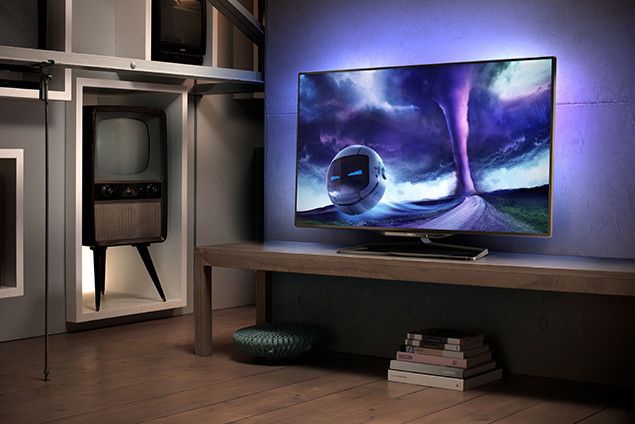With 4K televisions becoming all the more common, it seems logical that Philips would want to get in on the action. And, indeed, Pocket-lint has now seen an early prototype of the first 4K TV which will go on sale next year.
In case you're not aware, Philips doesn't make televisions anymore. You'll still find the firm's name on TVs, but these are part of a new deal with a company called TP Vision. TVs with Philips branding that are launched this year will be made by the new company, which is majority owned by TPV Technology and 30 per cent by Philips. This new ownership should be a good thing for the TVs, as the company is now solely focused on screens, without the distraction of lightbulbs.
For TP Vision, the focus with 4K isn't really about native 4K material, with the firm claiming there's just insufficient material at the moment. With the PS4 bringing entertainment material in 4K next year, that's likely to change soon, but progress will still be quite slow. Instead, there's been a decision to concentrate on providing good-quality upscaling for 1080p material. It's interesting to note that the problems around upconverting 1080p to 4K aren't the same as converting SD to HD. What TP Vision is trying to do, is give a 4K-like picture, with Full HD source material. This involves some sharpening techniques and quite a lot more running in the background.
The panel used in the TV is capable of 4K at 60fps, but without a new HDMI standard, it's impossible to actually get that material into the television from most sources. Of course, internet-delivered content could be displayed at 60fps and there was a discussion about upgrading the HDMI sockets to a 4k60p-compliant standard, but there's no word yet on whether that will even be technically possible. The firm did tell us that to manage a picture, the TV needs to process two billion pixels at any one time. That's a lot of horsepower, and we have a feeling this TV won't be cheap.
The TV we saw was a long way from being finished. There was no final case, the processing had been pre-applied to the material, which ran from a PC. That said, it did look nice, although the panel we saw was smaller than the one going into production. TP Vision would not be drawn on what the final size would be.
It's expected that the TV will launch at IFA this summer. At the moment, TP Vision is hammering out some aspects of the picture processing, but by the time the European trade show rolls around, there should be a final look and a working version of the screen. With the 21:9 TV having been discontinued, there's a chance this screen will be the new enthusiast model. And if it performs as well as the 21:9, it will be a blinder.

